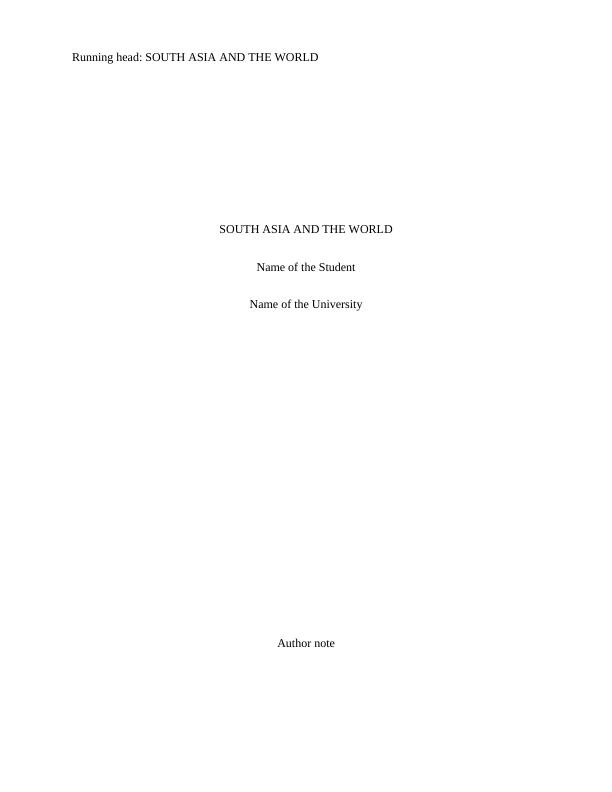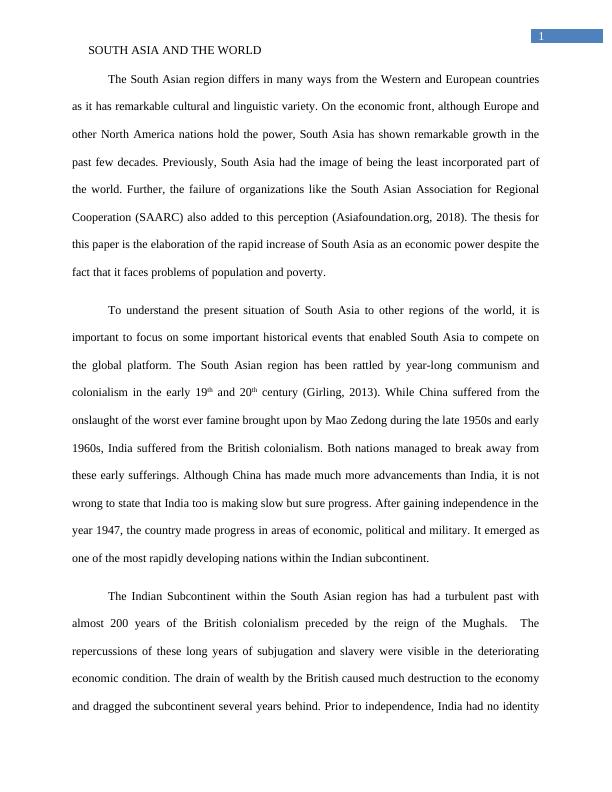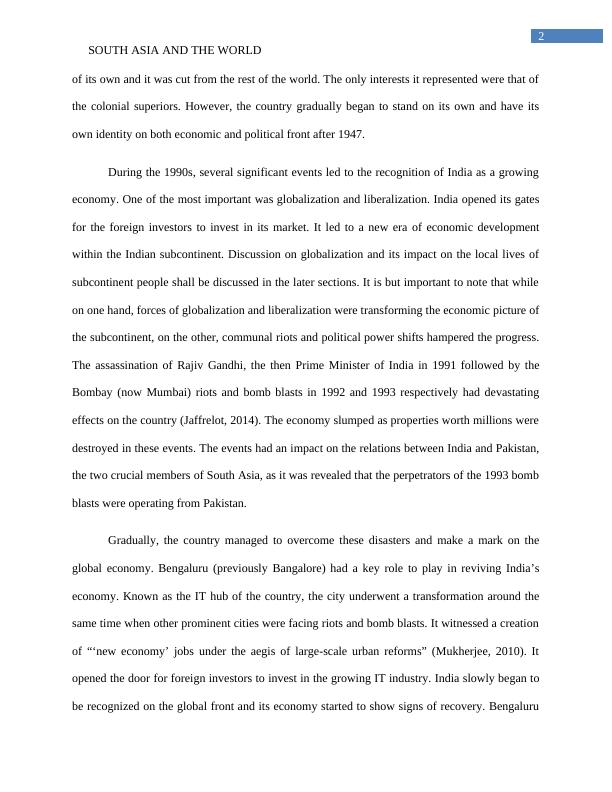South Asia and the World: Rapid Increase of South Asia as an Economic Power
6 Pages1342 Words372 Views
Added on 2023-06-11
About This Document
This paper elaborates on the rapid increase of South Asia as an economic power despite the fact that it faces problems of population and poverty. It focuses on the historical events that enabled South Asia to compete on the global platform.
South Asia and the World: Rapid Increase of South Asia as an Economic Power
Added on 2023-06-11
ShareRelated Documents
End of preview
Want to access all the pages? Upload your documents or become a member.
Social Difference and Inequality in South Asia
|6
|1387
|390
Key issues and challenges that South Asian countries are facing in Asian century
|12
|3291
|395
Indo-Pakistan War over Kashmir
|6
|2042
|415
Agricultural Development in South and East Asia
|7
|2022
|244
International Relations of Asia: A Brief Overview
|5
|502
|236
Application of Democratic Peace and International Law in South Asia
|9
|1741
|399



